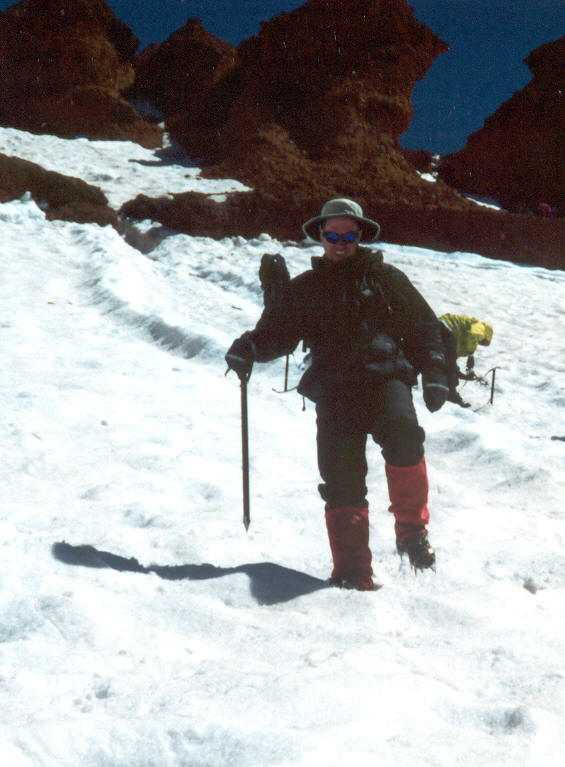

Lecture Two: Environmental Impact
RTM 251 - Introduction to Recreation and the Natural Environment
  |
Lecture Two: Environmental Impact RTM 251 - Introduction to Recreation and the Natural Environment |
Lecture Two: Environmental Impact in the Woods and around the Globe
The question of environmental impact is a not whether you create an impact on the physical resource but what level of impact. The choice to be alive means one is having an impact on the planet. The only way to avoid impact is to no longer be alive; or more accurately to no longer be decomposing after having been alive. The real question is whether one chooses to have a big impact or a little one, to walk softly through life or to stomp and jump and make a mess that everyone else will notice. This lecture has two objectives. The first objective is to refresh your knowledge on the significance of the global environmental crisis and review some basic principles of the environment. The second objective is to focus specifically on the question of impact on the outdoor recreation resource when people use the outdoors for play. In other words what should you do or not do to minimize your impact when using the wilderness.
The environmental crisis:
The global environmental issue is as large as the planet and there is significant debate about the severity of various issues. Spend 20 minutes surfing the web on the issue of environmental problems. Taylor your searches to be able to respond to the following questions. The Quiz 2 will ask you to summarize what you found in this open web search on these questions.
Q: What issue(s) seem to be the most critical in the minds of environmental groups (e.g. Sierra Club, Greenpeace, Friends of the Earth, etc.)?
Q: Many environmental issues will require the intervention of political and economic systems to address the issue. Look for a web site that focuses on 'practical things' that anyone can do to make a difference since you are not a world leader.
Q: What relationship is there between world poverty and environmental issues?
Q: How do you sort out facts from fiction on environmental issues? The web is filled with information - bloggers, politically active organizations, wikipedia, scientific articles. What information is trust worthy?
Principles of ecology and the environment:
Spend a few minutes looking up a few classic terms that inform us about key issues about the environment.
Laws of Ecology: http://www.umaine.edu/umext/earthconnections/earth/chapter3.htm
Sustainability: Sustainability Definitions - WA Dept. of Ecology. Read the definitions of sustainability and the governing principles.
Q: What are the five Laws of Ecology and examples of their function?
Q: Why is sustainability such a foundational concept for thinking about the environment and environmental issues?
The outdoor recreation impact:
Future lectures will spend time introducing you to 'resource managers', the history of outdoor recreation resources, and their use and preservation in the U.S. But regardless of who manages it there is a growing consensus on how the physical resource should be used when it comes to you going out to camp or hike or climb or ride. The low impact or leave no trace movement tries to educate people on what to do and what not to do when in the wilderness.
Start with the Leave No Trace web site and read about the Seven Principles in the program section; reading the detail as well as the overview for the principles.
The principles of the Leave No Trace program have become the basis for most regulations that campers, hikers, and other users must follow when in the backcountry of national parks and national forests. Here is an example of the 'rules' for Kings Canyon/ Sequoia National Park users (read minimum impact regulations only). They serve as a good summary of the LNT principles stated as regulations.
Q: What are the seven principles?
Q: How far must you be from an open water source to bury human waste? How far should you camp from the edge of a stream or lake? How much of your food waste can you leave in the woods? Can you use soap in streams? Why must you protect your food from wild animals?
Remember when going to a wilderness area to check with the management agency about their regulations as some will apply the principles in different ways creating some variation in regulations. Toilet paper regulations and human waste regulations vary from park to park depending on the ecosystem and the level of use.
For curiosity seekers only; check out the range of differences for sanitation practice between the Kings Canyon regs above and climbers of Mt. Shasta regulations - see p.2 on human waste in the following link (http://www.fs.fed.us/r5/shastatrinity/documents/st-main/maps/rogs/mt-shasta/climb.pdf#search=%22climber%20regulations%20Mt%20Shasta%20CA%22). Mt. Shasta has over 15,000 people per year who attempt to climb the popular mountain in a very small corridor which has led to the extreme sanitation practice. Campers in Big Bend NP (https://cms.imr.nps.gov/bibe/planyourvisit/bc_regulations.htm) have a more difficult policy with TP in rule #10 than places like Sequoia.
Before taking the quiz - participate in the Forum group for Unit 2. Once again - read one of the discussion topicsWhen you are ready to take Quiz 2 follow the link in Moodle. The test has 8 questions - 2 short answers about your web search, 1 T/F; 4 Multiple choice about ecology and leave no trace and one essay on LNT practices - so know specifics on LNT practices for camping and sanitation and so forth. Submit answers when you have completed the test.